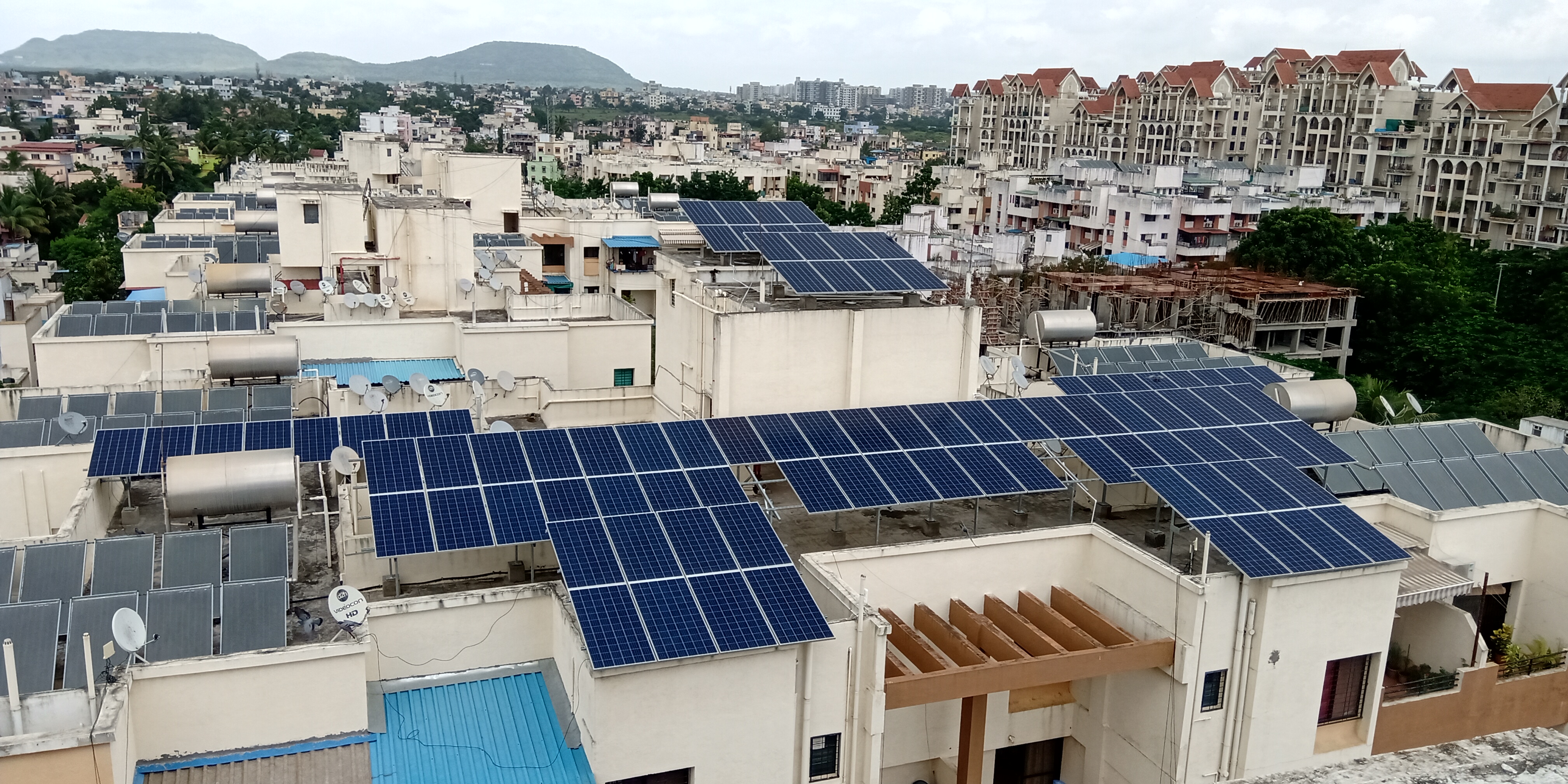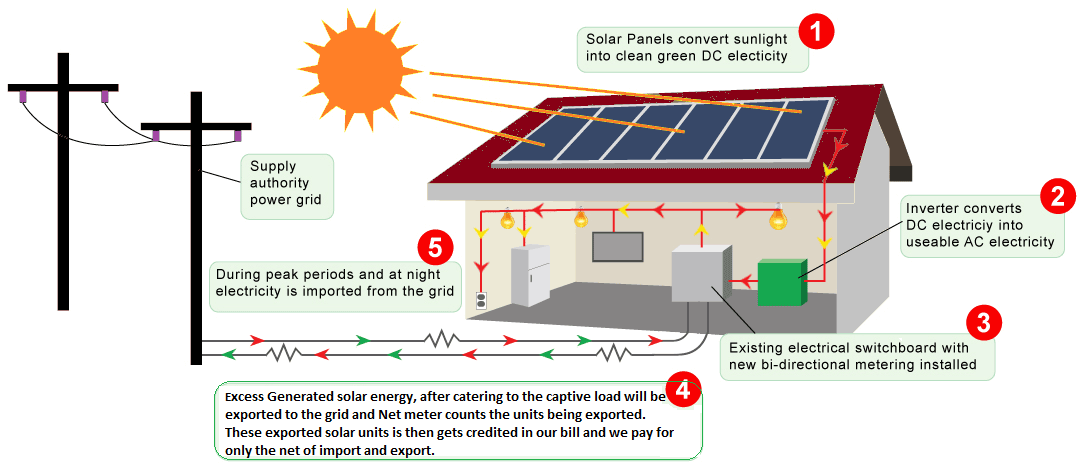Solar Energy
About Solar Energy
Solar Energy is freely available everywhere on earth and it is clean. Still, our daily use of Electrical Energy results in production of a lot of greenhouse gases. In some parts of the world availability of Electrical Energy is either scarce or unreliable. It is therefore prudent to harness the energy of SUN, the universal source of Renewable Energy for use in every sphere of life.

Merits:
- No or negligible running cost
- Raw materials (Sun light) is normally available in abundance without the need of any Logistics
- Solar energy cost is lower than those from other conventional sources
- A boon for delivering energy in remote areas
- Works as a shed and reduces temperature underneath by app 4°C
- Return on Investment is quite attractive
Demerits:
- Available only during day time
- Generation drops in cloudy / rainy weather
- Needs shadow free area; can't be installed with trees around.
- Dependence on grid (for grid tied system)
- High space requirement
- Energy storage is a critical issue
Types of Solar Power Systems
Off grid application
Off-grid Solar Power Systems are used in household and commercial applications where energy is stored in batteries for use at night or as and when necessary. The main features for such a solar power facility are:
- Generated Solar Power is used to run load as well as charging battery or storage device
- No need of availability of grid power, hence best suited for remote areas without power
- Excess solar energy after catering to load and battery charging, is wasted
- Facility to draw power from grid when demand is more than solar energy
- Priorities can be set based on need e.g. Solar – Battery – Grid or SGB or GBS etc.
- Costlier compared to Grid-tied systems and Requires maintenance
Grid tied application
- Power is generated and used only during sunshine hours
- No facility for energy storage, hence, can only be used when generated
- Automatic balancing of energy supply from Solar and shortfall from Grid
- Quality of Solar Energy matches that of Grid
- Solar Energy is generated if and only if Grid / DG Set Power is available
- Excess generation is fed to the grid and banked with Discom
- Under Net metering, solar energy system owners get credits for the electricity they export to the grid and adjust such credit against their consumption. Export of energy happens when the PV system generates more electricity than the consumption during daylight hours
- Economical compared to Off-grid systems
- Easier to maintain
However, if net metering is not available from utility:
- The excess energy, if fed to the grid, will be measured as consumption and rather than getting credit, the customer will have to pay for it!!! Hence, special arrangement of Reverse Power Controller needs to be made to avoid grid feed
- Load must be higher than generation ALL the time, so that energy is not wasted

Benefits of Grid Tied Solar PV Power Plant with Net Metering
- Generate Electricity through solar PV plant installed at your roof itself
- Energy generated during the day (sunlight hours) is first consumed by the daytime load
- If the generated energy is inadequate, the system automatically draws balance requirement from the grid
- If generated energy is higher than required by load, excess energy after catering to the load is exported to the grid
- At night, when there is no sunlight and hence no generation, load runs on grid power
- You pay for the net energy drawn from the grid (Consumption less Export to grid)
- There is no need to store energy in Batteries for use at night, hence the system is cheaper, more efficient and requires very less maintenance
- Post payback period, the system will deliver free electricity for another 20 to 25 years
- Depending on Utility Energy cost, Investment is paid back in approx. 2 to 4 years
